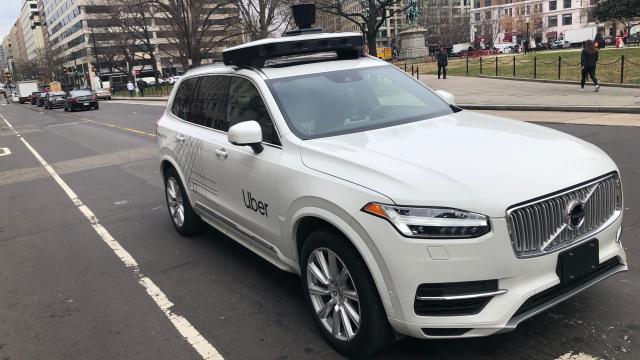Uber, like its competitors Waymo, Zoox, Cruise and others, has been trying and failing to get autonomous cars up and running for years now. The business opportunity — no more of that having-to-employ-drivers nonsense — is obvious, but it’s funny how everyone in the self-driving business seems to have stopped talking about self-driving.
They haven’t given up, of course. But remember in 2018 when Uber said that it wanted to get you in a driverless car by the end of that year? Or when Cruise said it would test self-driving cars in New York City? Or what about when Volvo said it would have a fully autonomous car by next year?
Those timelines haven’t quite worked out, unless Volvo really is ready to go next year with a Level 5 autonomous car. I’m not holding my breath! The reasons for this delay aren’t a mystery: Creating a car able to safely deal with every real-world contingency may, in fact, be close to impossible, but everyone is still trying for now.
That includes Uber, which, like Cruise before it, has been the subject of a deep dive from The Information. We learn, for example, that the fatal 2018 crash in Arizona seems to have shaken the company, even as no one aside from the safety driver suffered any apparent consequences from it. We also learn that Uber isn’t at all close to getting over the line with an autonomous car.
Take this snippet:
[In 2019], Uber’s vehicles had also been having what the company refers to as a bad experience — such as a sudden jerk or a potentially dangerous movement — every one-third of a mile on average. The company’s leaders had hoped the figure would fall to just one bad experience every 16 km by fall last year, said a person with direct knowledge of the goal. One person who worked on the effort told The Information they felt the prototypes were better than the data indicated.
Uber couldn’t even get the prototype to drive a one-mile stretch between the unit’s two Pittsburgh offices, with the goal of shuttling employees back and forth. Software leaders said they gave up trying because automating the route for internal use wouldn’t help Uber develop software that it could apply to a broader array of routes. But other managers said the failure sent a message that Uber just couldn’t pull it off.
Or this one (emphasis mine):
And in July this year, [Uber self-driving chief Eric Meyhofer] and his team gave a presentation in which they outlined their road map. They said they had selected 10 or so miles of public roads in Pittsburgh and Washington, D.C., in which to test vehicles, and had plans to do the same for San Francisco, Toronto and Dallas in the future. They spent time discussing the new rNA software, which by the end of September was supposed to power a prototype — a Volvo SUV with Uber’s tech installed — in public road tests. One current employee and one former employee said that is likely to slip to October.
At the time of the July presentation, the company’s data showed that Uber was only 3.9% of the way toward figuring out how to test the vehicle’s readiness to handle potential situations arising on the road.
In a four-way stop, for instance, a vehicle must be able to detect pedestrians, obey the stop sign, let a pedestrian pass and so on, with each one of those items representing a situation, or test case. The slide projected that a prototype would need to pass 28,778 test cases for those road scenarios by the end of next year — when Uber wants a driverless vehicle to be on the road in Pittsburgh, with no human backup.
I recommend reading the whole (paywalled) story here. I would quibble only a bit with the headline, which says that Uber has “wasted” $US2.5 ($4) billion on its self-driving efforts. The fact is, if Uber has wasted billions in research and development money on self-driving, so has everyone else.
That’s the nature of spending money on research and development. Sometimes it works out, sometimes it doesn’t. So far, none of it’s worked out, if you take working out to be producing an autonomous car capable of dealing with every contingency. It’s gonna take many more billions to get there — if we can ever achieve that.
